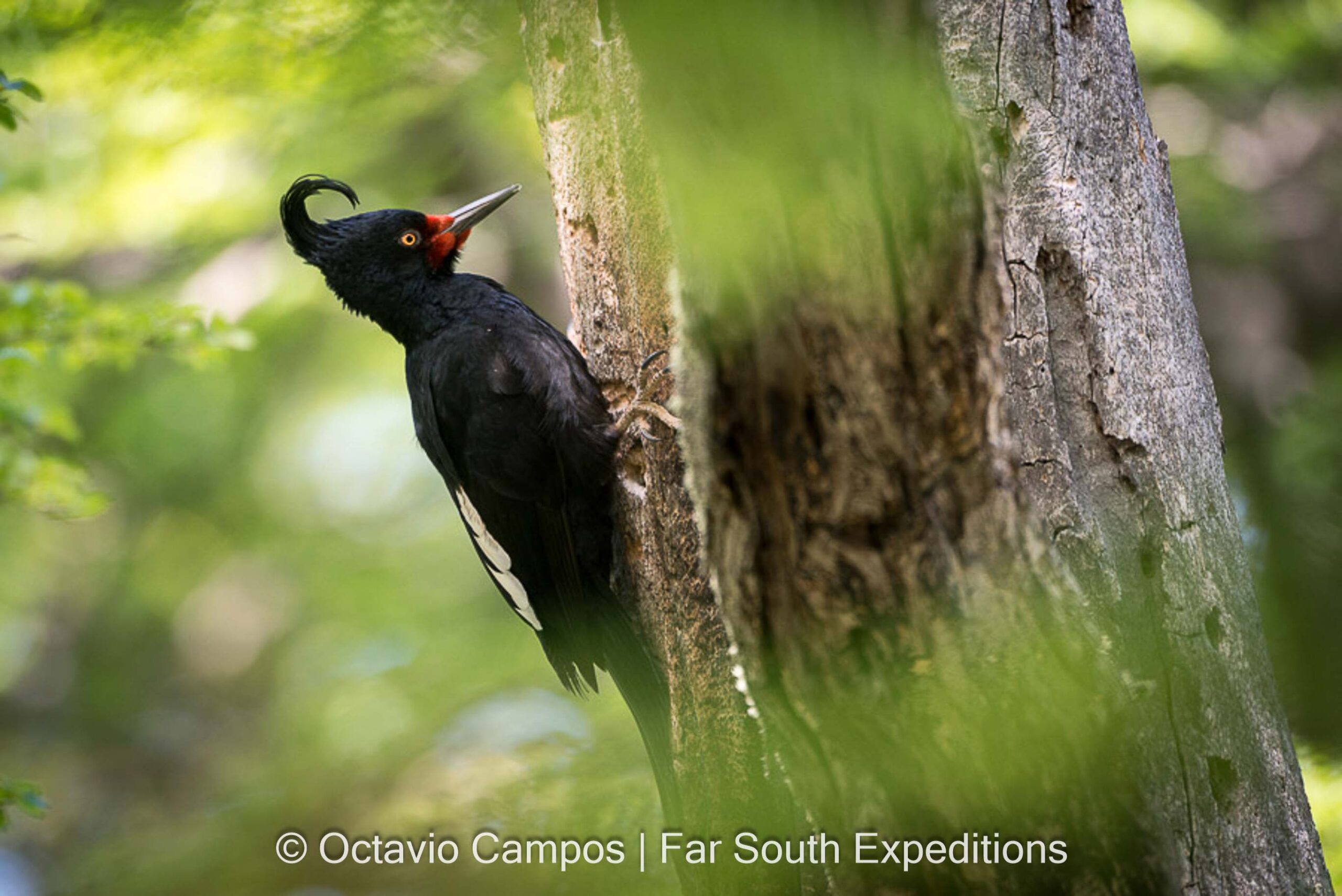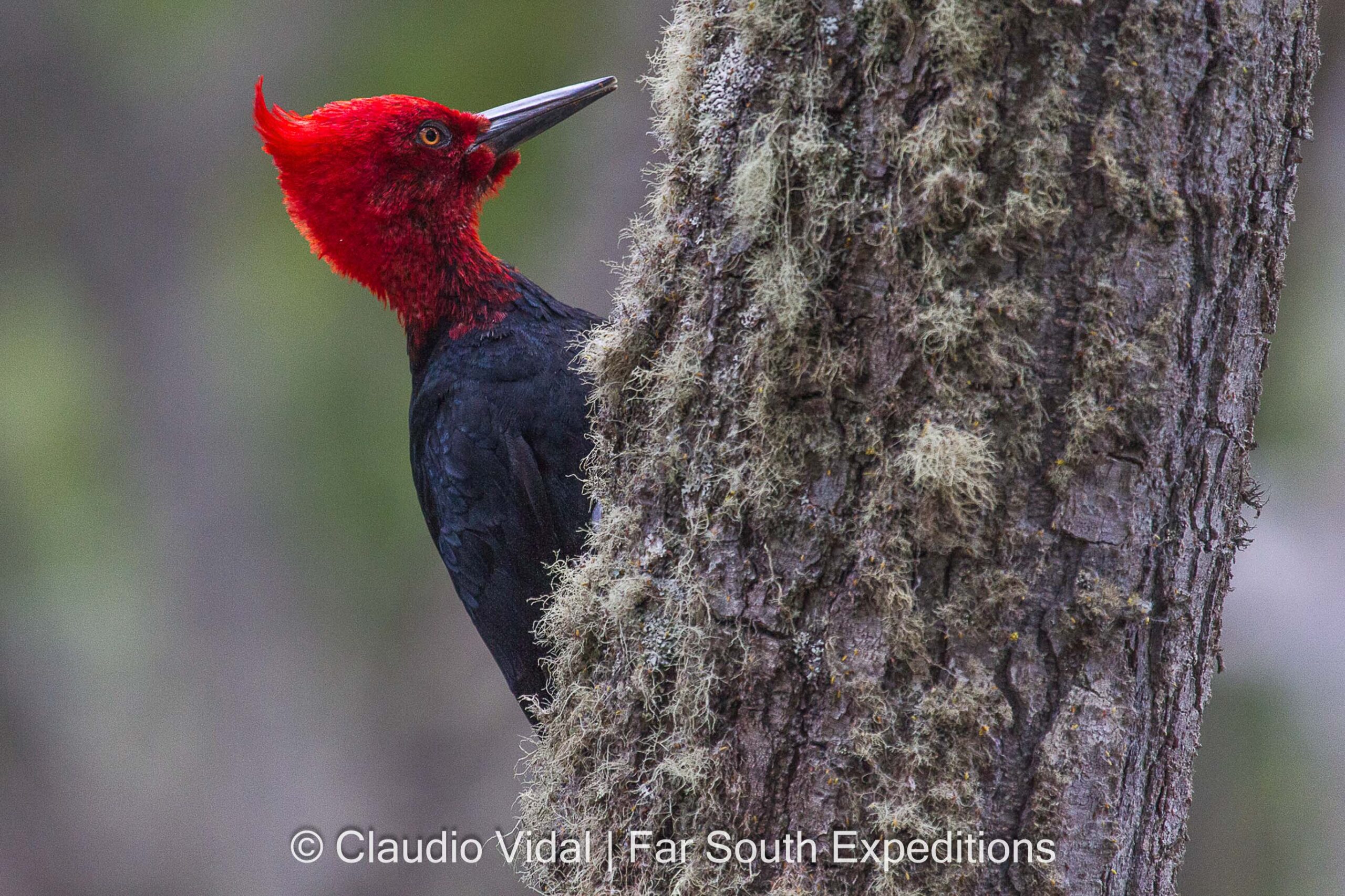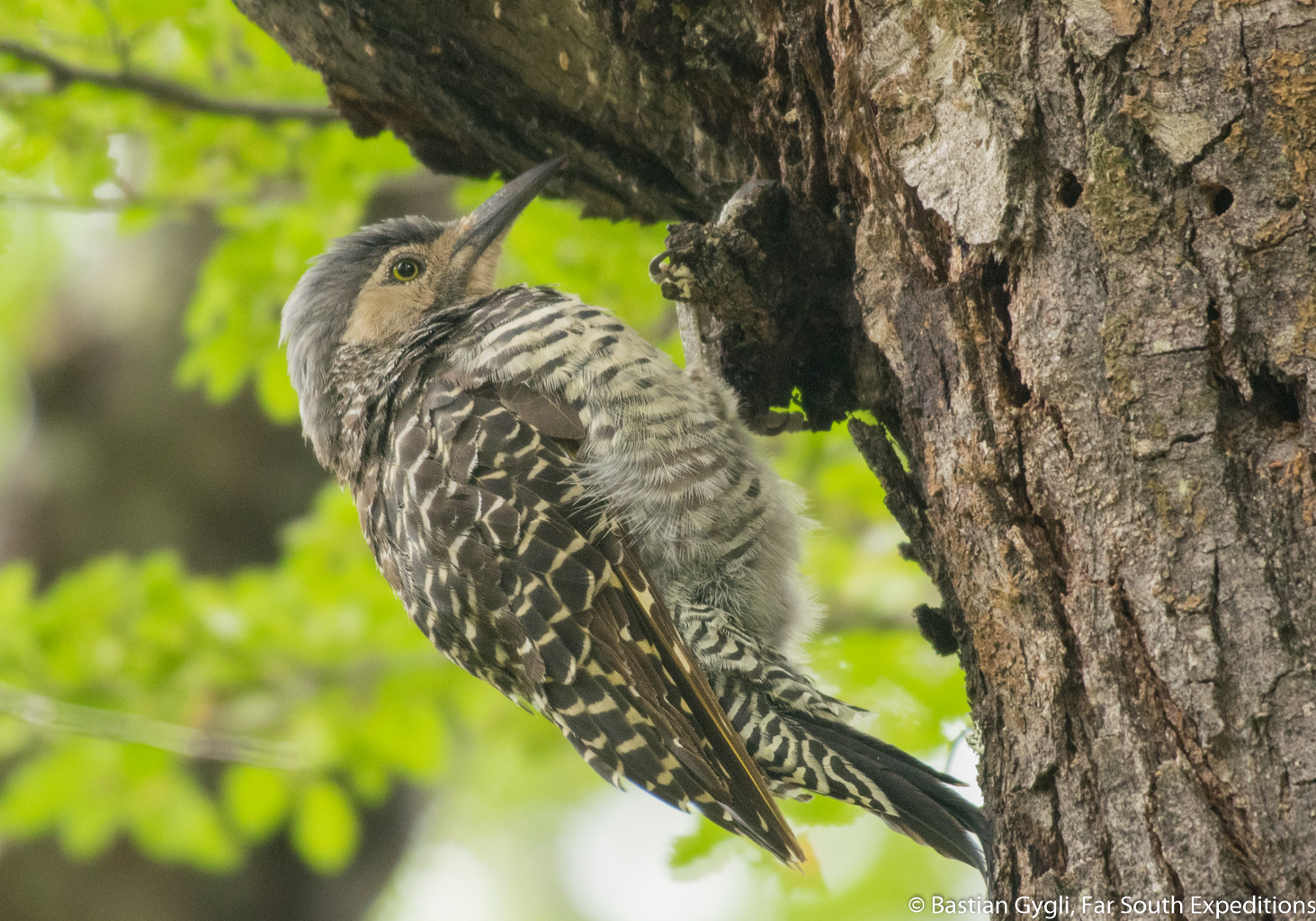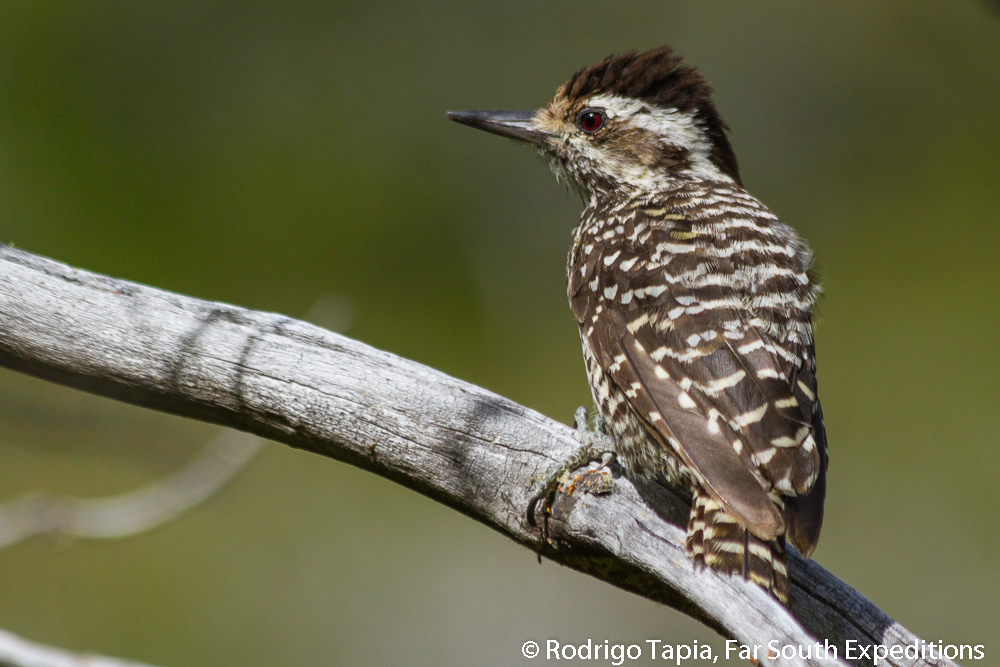Woodpeckers (family Picidae) are easy to recognize by the distinctive drumming sound they produce when pecking on tree trunks, as well as by their ability to move vertically along trees and take short flights from one tree to another. Beyond these remarkable skills, woodpeckers play a key role in their environment: they act as true ecosystem engineers.
Why Are Woodpeckers Ecosystem Engineers?
Trees, trunks, and branches are the main substrates for woodpeckers, serving as sites for nesting, shelter, and food. One of the most remarkable traits of this group is their ability to excavate cavities in live and dead trees—a typical behavior of primary cavity nesters.
This “engineering” skill makes woodpeckers a keystone species within many communities of secondary cavity nesters —species that use cavities to nest but are unable to excavate them themselves. These include songbirds such as thorn-tailed rayaditos, swallows, and house wrens; parrots like the austral parakeet and the slender-billed parakeet; raptors such as the rufous-legged owl, Austral pygmy owl, and American kestrel; as well as small mammals like the monito del monte and arboreal rats, and even reptiles such as the tenue and picta lizards.
In this way, woodpeckers play an essential role in forest dynamics, as their presence promotes biodiversity and allows many other species to reproduce and survive within these ecosystems.
Picidae Family in Chile
During our expeditions, searching for woodpeckers is always part of the adventure. The species we observe varies depending on the area we are in.
Magellanic Woodpecker
In the temperate forests of southern Chile, we find a species that is endemic and emblematic of these ecosystems: the Magellanic Woodpecker (Campephilus magellanicus). It is the largest woodpecker in America, reaching up to 45 cm in length, and often reveals its presence through a distinctive non-vocal sound known as a “double drum,” which can be heard from great distances.
It shows marked sexual dimorphism: the male is distinguished by his red head and neck with a slight crest, while the female has an entirely black head, a long, curly crest, and dull red feathers at the base of the bill. Both sexes share a black-and-white plumage pattern and orange-yellow irises.
The Magellanic Woodpecker is strongly associated with native forests of Nothofagus, Araucaria, and Austrocedrus. It is highly territorial and uses the “double drum” to communicate with other group members, in addition to producing dry pecking sounds while foraging for food.
Chilean Flicker
Chilean Flicker (Colaptes pitius) is a medium-sized woodpecker (about 33 cm) found in the temperate forests and Mediterranean regions of Chile and Argentina. It is easily recognizable by its low, undulating, and heavy flight, as well as the loud sound it makes, especially during flight.
Its plumage features dark brown tones on the back and wings, with whitish details. The head is a deeper brown, providing excellent camouflage among the tree bark. The chest and belly are pale yellow or ochre, with well-defined black spots or barring. The male is distinguished from the female by a dark malar band.
Although it can climb and perch on trees, it spends much of its time in open spaces, setting it apart from other more arboreal woodpeckers. It feeds on the ground, in grasslands, on the bark of living trees, or on fallen logs. Its diet consists of insects and larvae.
Striped Woodpecker
Striped Woodpecker (Dryobates lignarius) is a small piciformes bird, about 18 cm in length. It is found in sclerophyll and temperate forests, from the Coquimbo Region to Magallanes. It shows slight sexual dimorphism: the male has a red patch on its nape, which females lack. The forehead and crown are black, and the sides of the face are white, contrasting with the dark ocular and malar stripes.
Both sexes have a striped pattern on their heads, but the male is distinguished by the orange-red patch on its nape. Its plumage is streaked in white and brownish-black tones, which camouflage it among the vegetation.
It forages on the bark of medium to large trees, as well as on shrubs, and rarely descends to the ground. It moves by undulating flight from tree to tree.
Andean Flicker
Andean Flicker (Colaptes rupicola) is a medium-sized woodpecker (33 cm) found in the highlands of northern Chile. It has a long, dark, slightly bluish beak, and yellow irises. The male features a dark malar band with a bluish sheen and a red tip. Its face, neck, chest, and belly are yellowish, with a dark brown, scaled chest. Its back and wings are dark brown with yellowish barring.
It inhabits the outskirts of wetlands, rocky areas, and road edges in the highlands. It is a terrestrial species that feeds on the ground. It nests in cliffs, on hill edges, and in abandoned adobe buildings, where it excavates cavities for nesting.
Impact on Forest Health
Woodpeckers play a key ecological role by acting as natural predators of xylophagous insects—those that feed on wood— thus contributing to biological pest control that helps protect forest health.
By preying on these insects, they help prevent infestations that could weaken or kill trees, affecting the structure and function of the forest ecosystem. Additionally, by excavating cavities to nest or feed, they facilitate the decomposition of dead wood and foster biodiversity by creating habitats for other species, such as birds, mammals, and insects.
For more information about our expeditions and woodpecker spotting opportunities in their natural habitat, contact us at tours@farsouthexpeditions.com












Leave a Reply
Your email is safe with us.